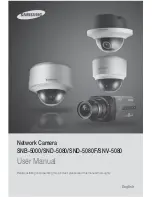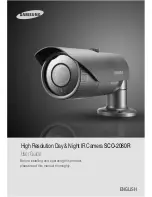
― 24 ―
Figure 22. Vehicle Detector settings
The following paragraphs provide short descriptions of the Vehicle Detector parameters:
Shadow Suppression Mode
– Disable/Enable shadow suppression. Enabling this feature can help
reduce false triggers caused by shadows. During certain times of day when a vehicle shadow is
sufficiently dark compared to the road surface, it could be mistaken as a vehicle by the Vehicle
Detector. The shadow can be from a car in the adjacent lane, or a long shadow cast in front of or
behind the vehicle. Be advised, however, that the use of shadow suppression mode also increases
the chances of missing vehicles. This is especially true when the road surface is light in color, causing
Shadow Suppression Mode to incorrectly identify dark vehicles as shadows. In many cases, it may be
wiser to tolerate some false triggers rather than to miss some legitimate ones.
Trigger Line -
This determines the location of a “virtual trigger line” which in fact is the center line of a
200 lines high “Vehicle Detection Area” inside the image. It is specified as the line number of the
center line measured from the top of the image and down to the center line of the “Vehicle Detection
Area”. The range is from 350 to 1702 (default).
Retrigger Delay - This setting determines the minimum number of frames between two consecutive
triggers. The allowable range is 0 to 63. The actual time can be calculated as the number of frames
multiplied by the frame-rate selected in the Trigger Sync mode setting. If multiple triggers occur within
this time then only the first trigger will be accepted. The purpose for this setting is to minimize the
number of “multi triggers” where the same vehicle generates multiple triggers but only a single image
is needed to identify the vehicle.
Lane Empty
– This setting is essential to the “Rear Shot” Lane Direction mode (explained below).
This specifies the maximum number of “empty” frames the triggering system is allowed to wait in
order to make sure that the vehicle has left the detection area. Valid range is between 1 and 11. If this
value is too low then a lot of multi-triggers will be generated. If it is too high then it limits the ability to
detect tail-gating vehicles (in case the tail-gating vehicle is closer to the vehicle in front than the
number of frames specified). Default value is 11 and it is recommended to keep this maximum value
whenever possible since this will reduce the amount of double-triggers on trucks with trailers.
However, for high-speed traffic installations the value might need to be lowered (or frame-rate
increased) to avoid missing tail-gating vehicles.
Lane Configuration - This selection has the choice of Single Lane and Dual Lane. In Single Lane, the
Vehicle Detector algorithm uses the whole Vehicle Detection Area to detect a vehicle. In Dual lane,
the image is divided in half and each half is used to detect vehicles. Thus, if a vehicle happens to be
crossing between lanes, there may be an instance, where the same vehicle may be triggered in both
lanes.
Lane Direction
– This selects the way the Vehicle Detector triggers are generated. In “Rear Shot”
mode the vehicles will be travelling away from the camera and the triggers are generated when the
















































